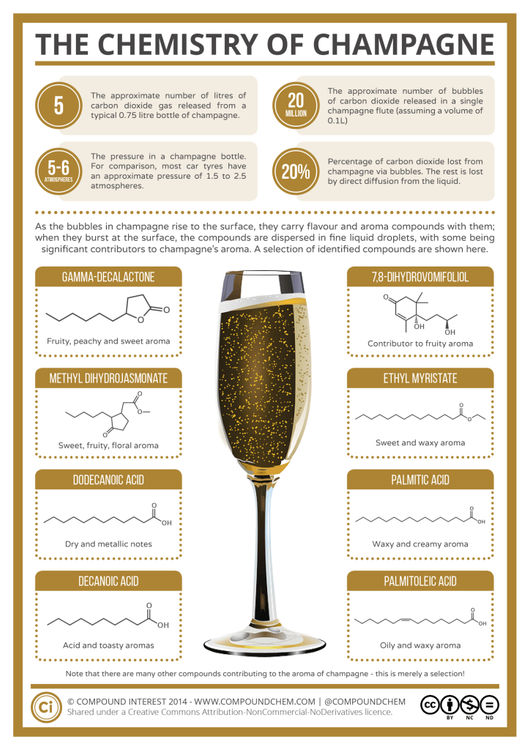© Compound InterestThe Chemistry of Champagne
With New Year’s Eve upcoming, a large number of people will celebrate by popping open a bottle of champagne. The bubbles in your glass may seem simple enough, but there’s actually a wealth of interesting chemistry behind them – chemistry that’s vital for the perceived taste and aroma of the wine. There’s a lot more to the bubbles than you might think, and this post picks apart some of the chemical compounds involved.
The obvious chemical contributor that causes the bubbles to appear in champagne in the first place is carbon dioxide, which originates from the fermentation process. Champagne is unusual amongst wines, in that it undergoes two fermentations – one before bottling, and one in the bottle before it is drunk. The second fermentation produces the carbon dioxide and ethanol that are vital for the finished product.






